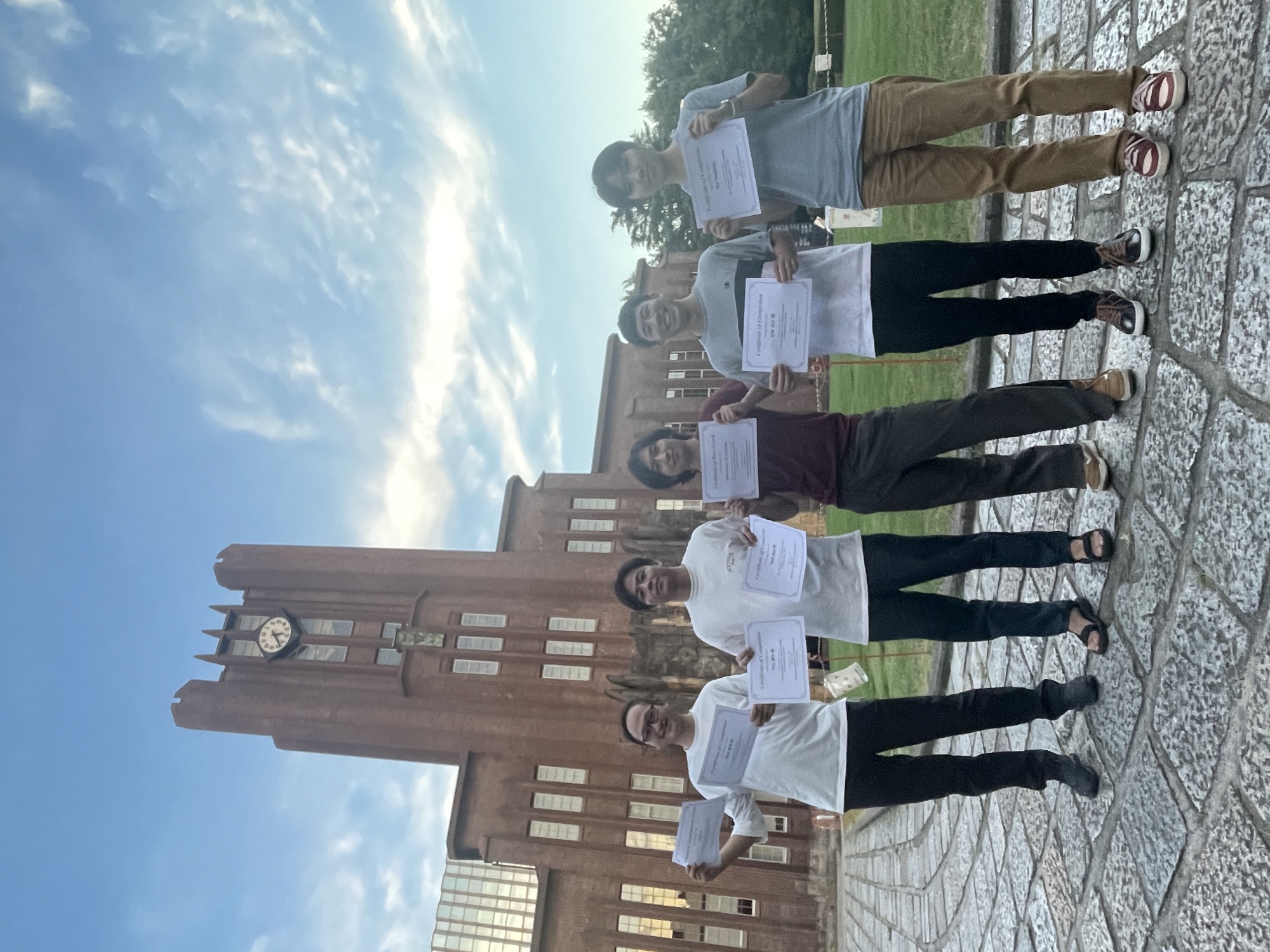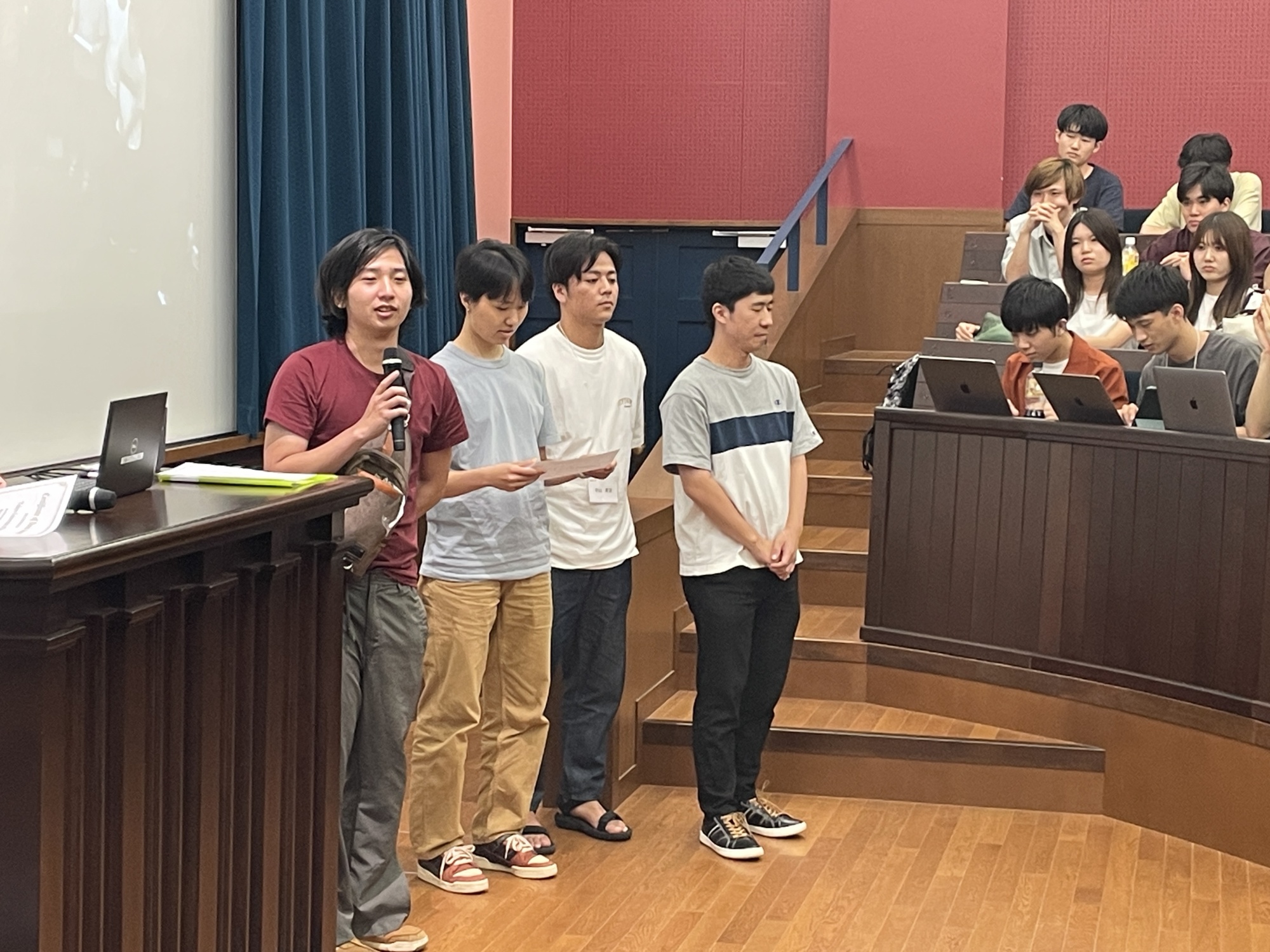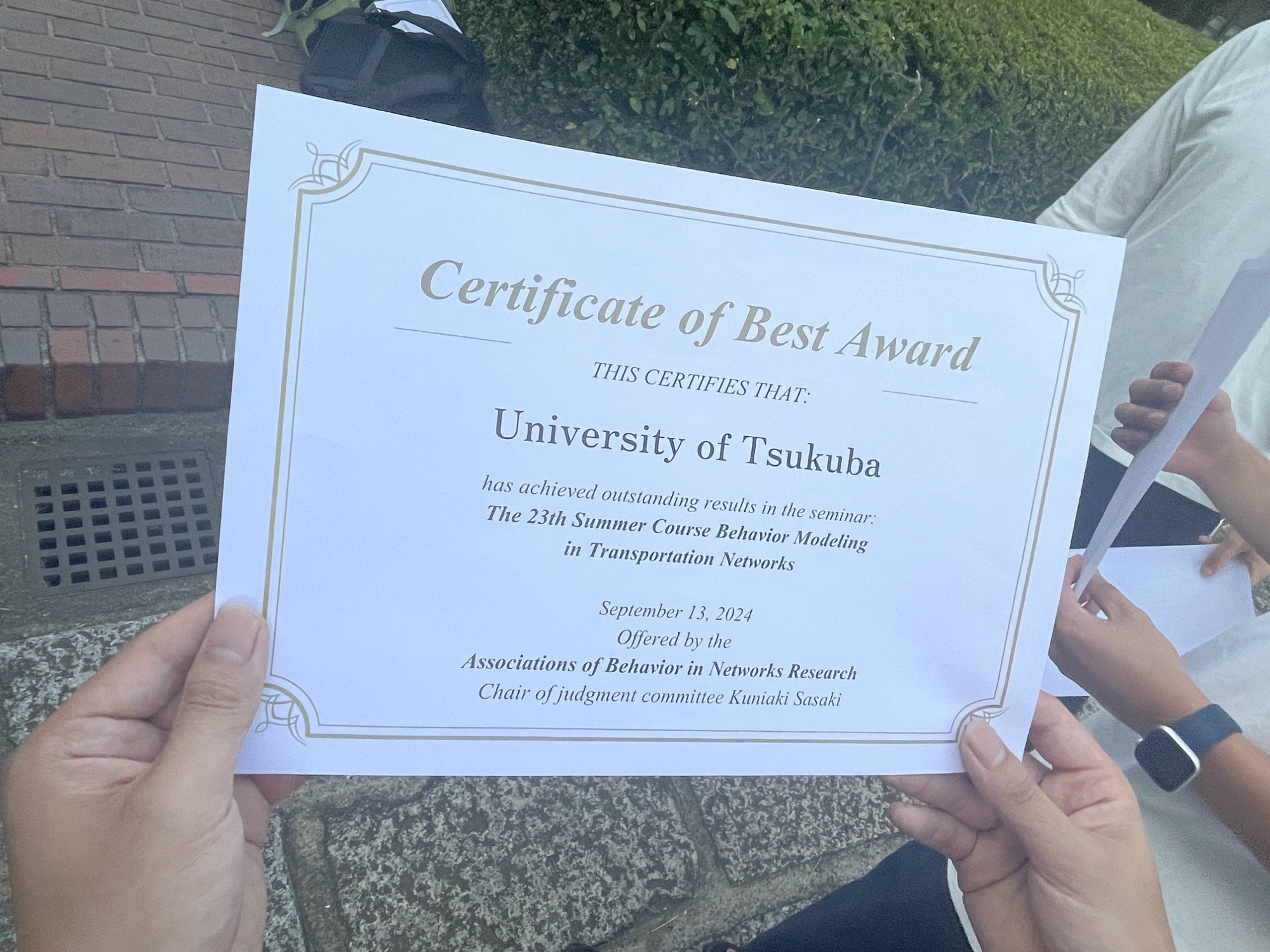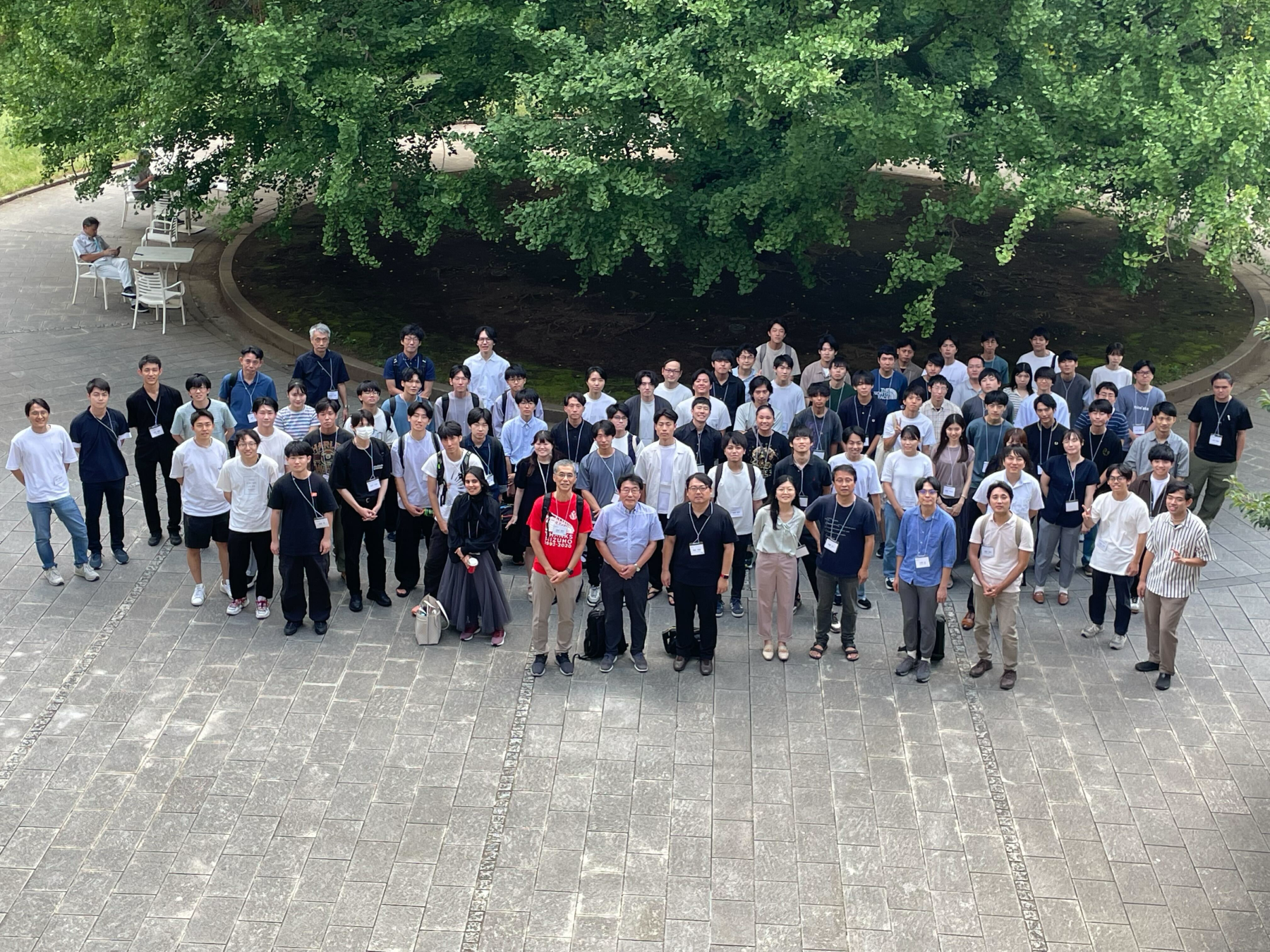

News
2024.09.16
9/11-9/13の第23回行動モデル夏の学校2024(以下、BMSS2024)に参加してきました。BMSS2024は、日本国内、インド、パキスタンから行動モデルなどの交通行動分析に関わる研究室の学生が参加するサマースクールです。行動モデルの基礎や応用的な行動分析方法に関する講義群、招待講演者などによる最先端の交通研究の紹介・議論、実行動データを用いた行動モデル推定・政策分析によるWS(データ解析コンペティション)の大きく三つで構成されています。今回は、筑波大学の研究室として初めてコンペティションに参加し、16大学22チームの学生のみなさん、BMSS2024の先生方と議論してきました。
LOREFC(田村、Wei、中澤、中嶋、中山)は、WSでは、「松山市中心市街地における歩行者空間整備が交通手段選択に与える影響」(ビデオもあるので見たい方は問合せください)というタイトルで発表しました。松山市内の松山市駅地区、道後地区、松山駅地区の3つに分けて、地区内移動に歩行が多く使われるようにするにはどうしたらいいか、を考えました。特に、松山市中心部では、松山市駅・松山駅を中心に賑やかで交流の生まれるまちづくりを都市整備を進めており、こうした整備の効果を評価したいと取り組みました。分析では、空間への印象コメントと位置情報をもつデータの自然言語分析をMecabにより行い、コメントのポジティブ・ネガティブ判定を行いました。さらに、その判定を道路リンクと結びつけ、交通手段選択に与える影響を明らかにしました。特に、ネガティブな印象がある空間が歩行を遠ざけていることが明確になり、駐車場配置や歩行者向けの街路形成など、より繊細な空間構築が必要であるという示唆が得られました。なお、この発表は審査により、全22チーム中、第一位の表彰を受けました。(やりました!)
初めての参加で不安でしたが、温かく議論・アドバイスいただき、無事、WSの発表まで辿り着くことができました。また、三日間、多くの行動モデルや交通工学に関する研究・知識・実例に触れることができ、大変勉強になりました。今後の研究活動に生かしていきたいと思います。




We attended the 23rd Behavioral Modeling Summer School 2024 (BMSS2024) from September 11 to 13. BMSS2024 is a summer school where students from research labs in Japan, India, and Pakistan, focusing on behavioral modeling and transportation behavior analysis, come together. The program consists of three main parts: lectures on the basics and applications of behavioral analysis, presentations and discussions on cutting-edge transportation research by invited speakers, and a workshop (data analysis competition) on estimating behavioral models and policy analysis using real behavioral data.
This year, our lab at the University of Tsukuba participated in the competition for the first time, engaging with students from 16 universities and 22 teams, as well as the BMSS2024 faculty. Our team, LOREFC (Tamura, Wei, Nakazawa, Nakajima, Nakayama), presented in the workshop with a study titled “The Influence of Pedestrian Space Development on Transportation Choices in the Central Area of Matsuyama City.” We analyzed how to increase pedestrian use in three areas of Matsuyama City: Matsuyama-City Station, Dogo, and Matsuyama Station districts. Specifically, we wanted to evaluate the effects of urban developments aimed at creating a vibrant, interactive city centered around Matsuyama City Station and Matsuyama Station.
Our analysis used natural language processing (with Mecab) to analyze comments with spatial impressions and location data, identifying whether the comments were positive or negative. We then linked these evaluations to road networks to examine their impact on transportation mode choice. The results showed that negative impressions of certain areas discouraged walking, highlighting the need for more careful urban design, such as parking placement and pedestrian-friendly street formation. Our presentation was awarded first place among the 22 teams! (We did it!)
Despite being nervous about our first participation, the warm discussions and advice helped us successfully complete our presentation. Over the three days, we learned a lot about behavioral models, transportation engineering, and real-world case studies, and we look forward to applying this knowledge to future research.
Other news
↑